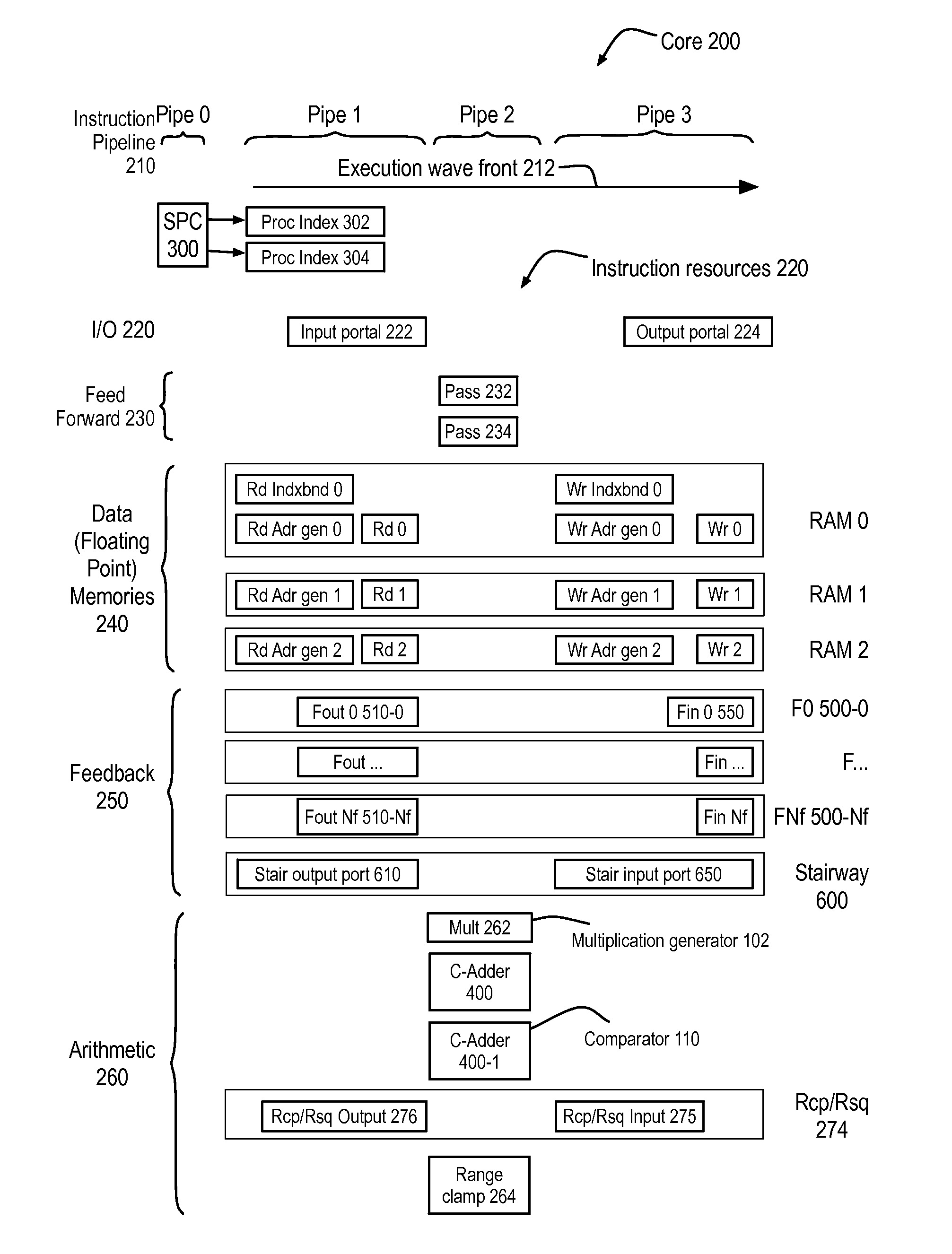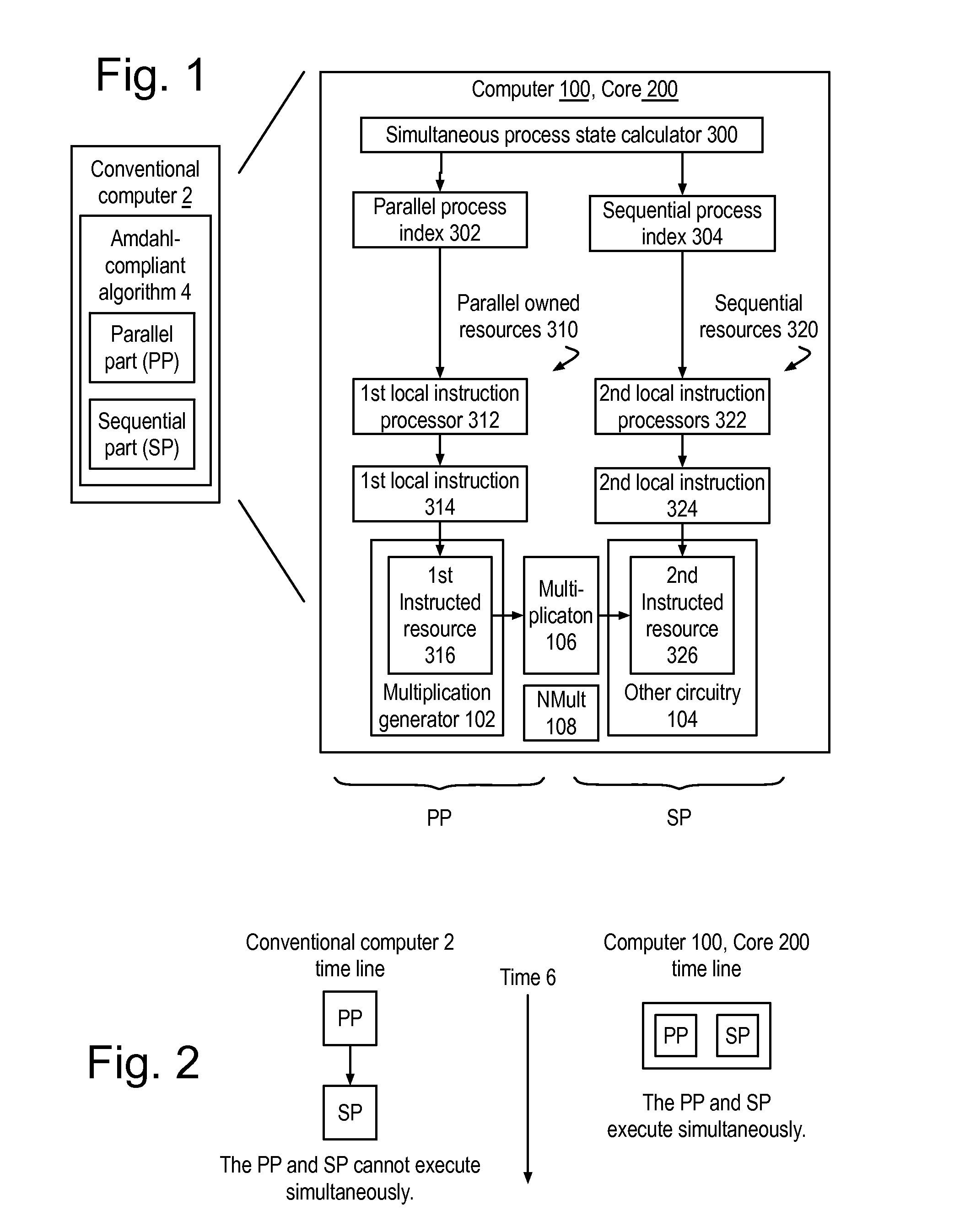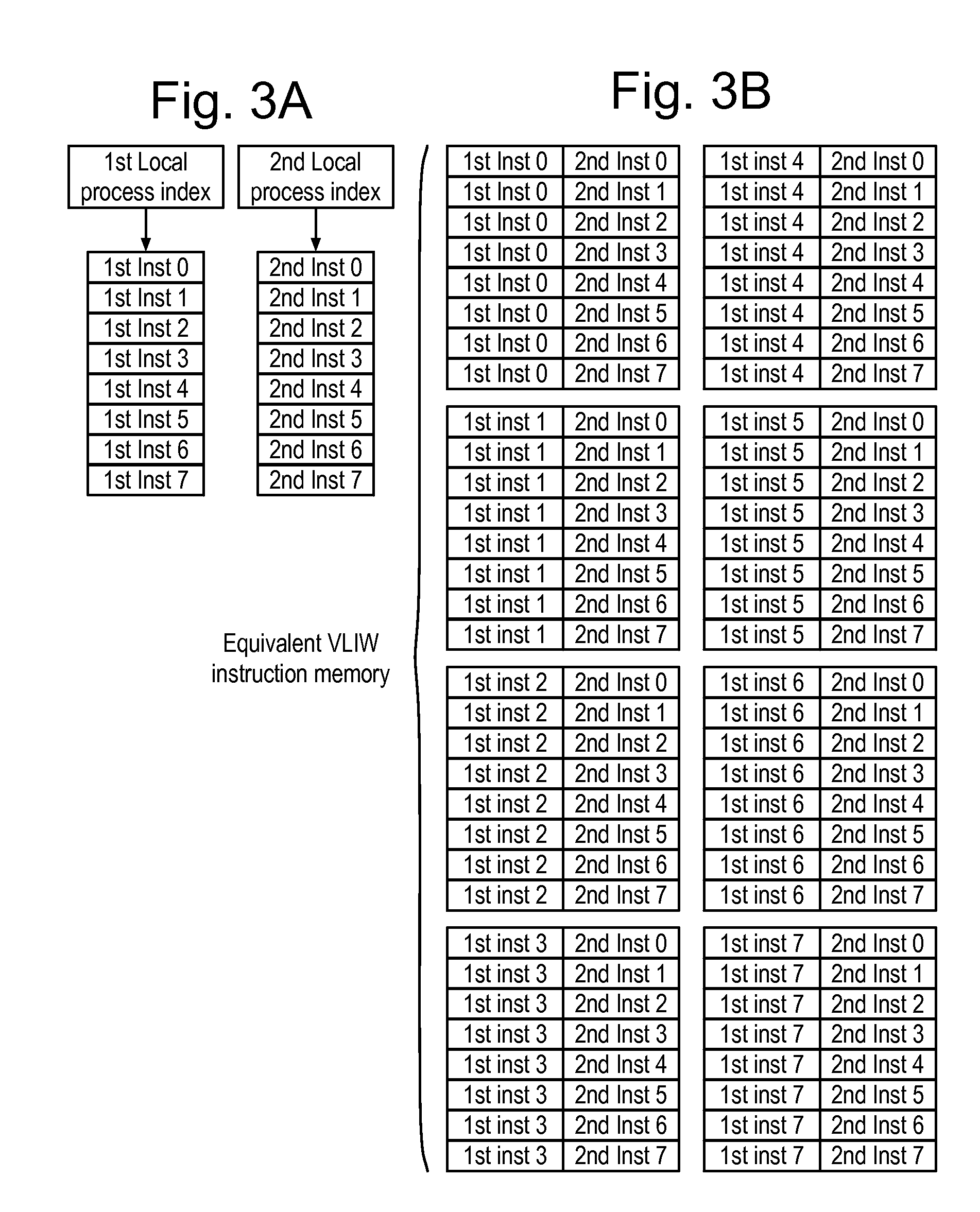Computer for amdahl-compliant algorithms like matrix inversion
a technology of matrix inversion and amdahl, which is applied in the field of computer for amdahl-compliant algorithms like matrix inversion, can solve the problems of fundamental limitation of the performance of parallel processors, and achieve the effect of improving the performance of the maximum performance of the matrix inversion and being more complex
- Summary
- Abstract
- Description
- Claims
- Application Information
AI Technical Summary
Benefits of technology
Problems solved by technology
Method used
Image
Examples
Embodiment Construction
[0038]Today, the term computer typically refers to a device that accesses a program stored in some form of memory to fetch and execute instructions. The limitations described by Amdahl's law are inherent in this definition of a computer. This disclosure will define a computer as including at least one data processor and at least one instruction processor, with each data processor instructed by at least one of the instruction processors. This definition encompasses all previous computer architectures, but provides some new tools.
[0039]This disclosure starts with simultaneous processes, the basics of their implementation in a core, and some fundamental advantages they bring. A first example core discloses using multipliers, in particular floating point (FP) multipliers to generate the multiplications and introduces the concepts of an execution wave front traversing the instruction pipeline, local instruction processing for instructed resources of each simultaneous process with detaile...
PUM
 Login to View More
Login to View More Abstract
Description
Claims
Application Information
 Login to View More
Login to View More - R&D
- Intellectual Property
- Life Sciences
- Materials
- Tech Scout
- Unparalleled Data Quality
- Higher Quality Content
- 60% Fewer Hallucinations
Browse by: Latest US Patents, China's latest patents, Technical Efficacy Thesaurus, Application Domain, Technology Topic, Popular Technical Reports.
© 2025 PatSnap. All rights reserved.Legal|Privacy policy|Modern Slavery Act Transparency Statement|Sitemap|About US| Contact US: help@patsnap.com



